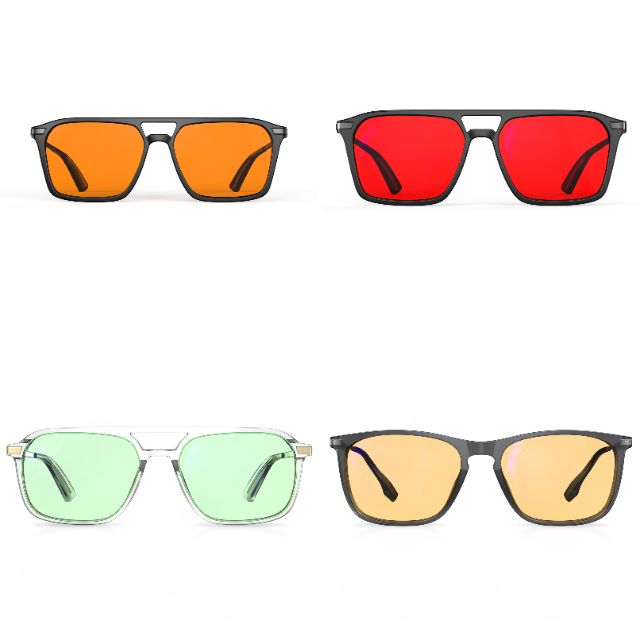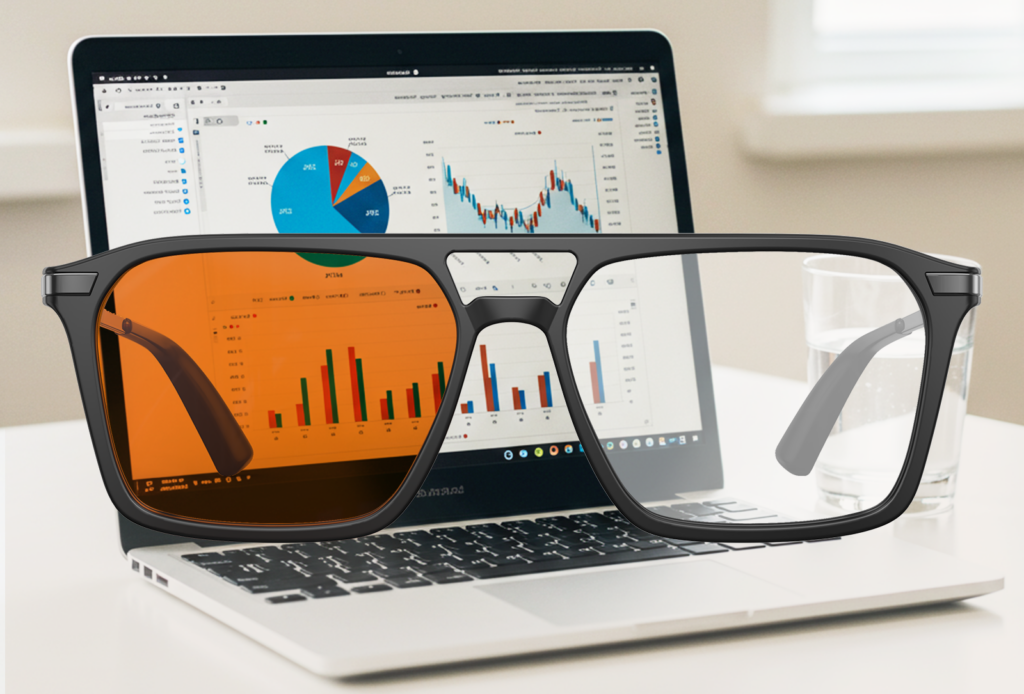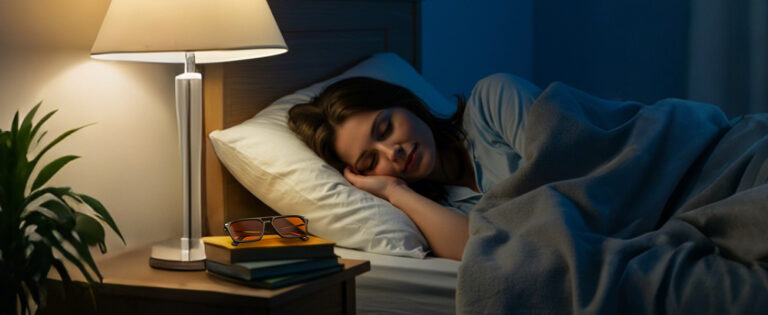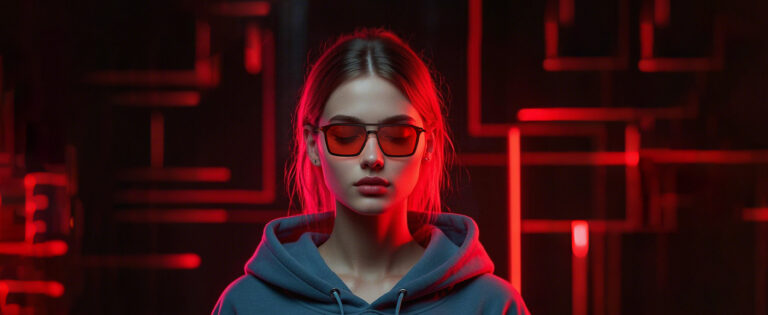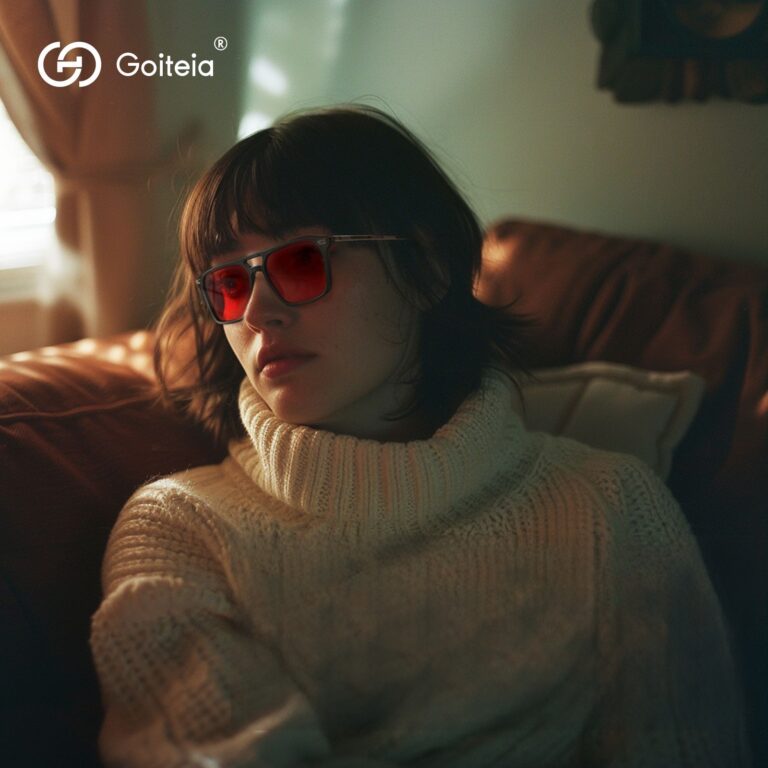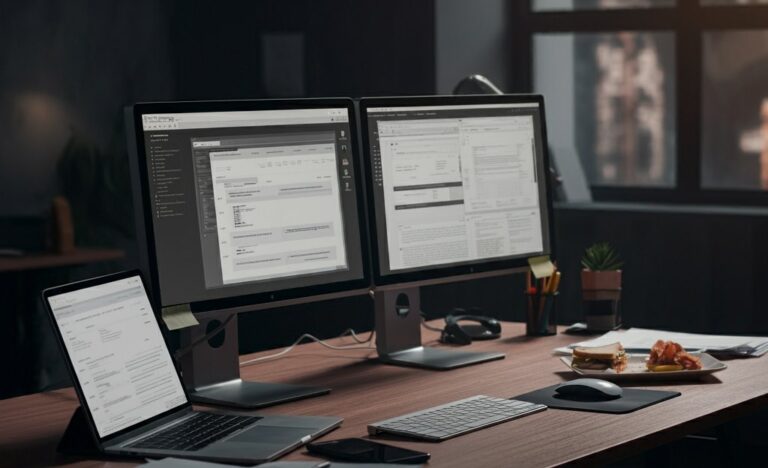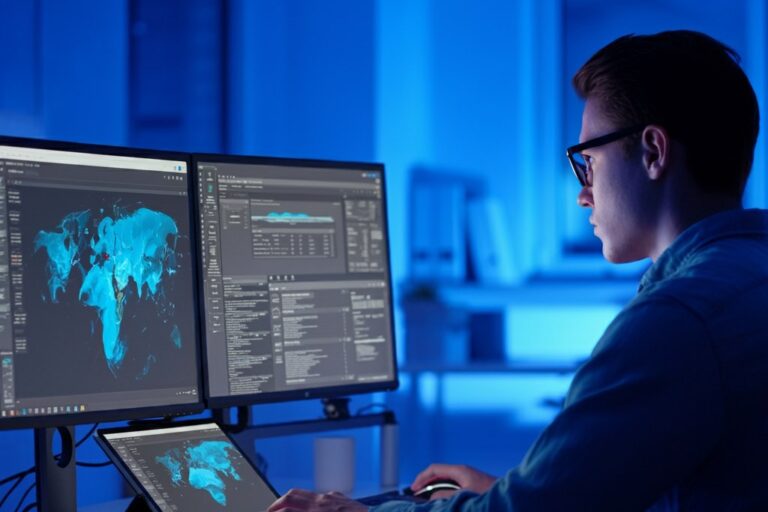Free UK/DE/FR/IT/ES/US Shipping SHOP NOW
Ever felt your eyes burning after hours of scrolling or squinting at spreadsheets? You’re not alone. Take Sarah, for example. As a graphic designer, she spends over 12 hours a day in front of her computer screen. Lately, she’s been experiencing frequent headaches, her eyes are constantly dry, and her vision seems a bit blurry. She’s not the only one suffering. So do blue light glasses is a nice choice? Let’s get it.
In a world where screen time averages 10.5 hours daily, digital eye strain—or Computer Vision Syndrome (CVS)—is a growing concern. But can blue light glasses really save the day? Let’s dive into a groundbreaking study on radiology residents to find out.
What Is Computer Vision Syndrome (CVS)?
Common Symptoms of CVS
CVS isn’t just about tired eyes. Symptoms range from headaches and blurred vision to dry eyes and neck pain. Imagine your eyes screaming ‘Enough!’ after hours of staring at monitors. The study used a 16 items CVS – Q questionnaire to measure these symptoms, confirming that radiologists—who spend 8–12 hours daily analyzing scans—are prime targets for CVS.
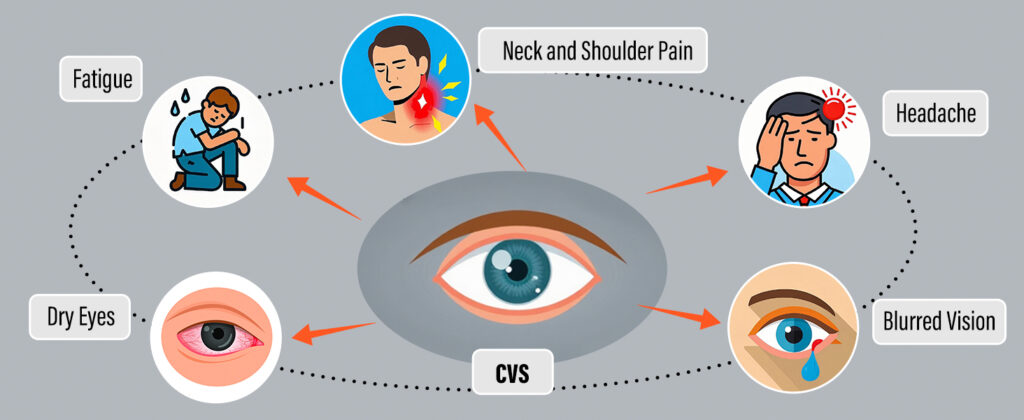
Why Radiologists Are at Higher Risk?
Radiologists aren’t just diagnosing patients; they’re battling fatigue. A 2019 survey found that 36% of neuroradiologists read studies while sleep-deprived! Combine this with high-resolution screens and minimal breaks, and you’ve got a recipe for eye strain.
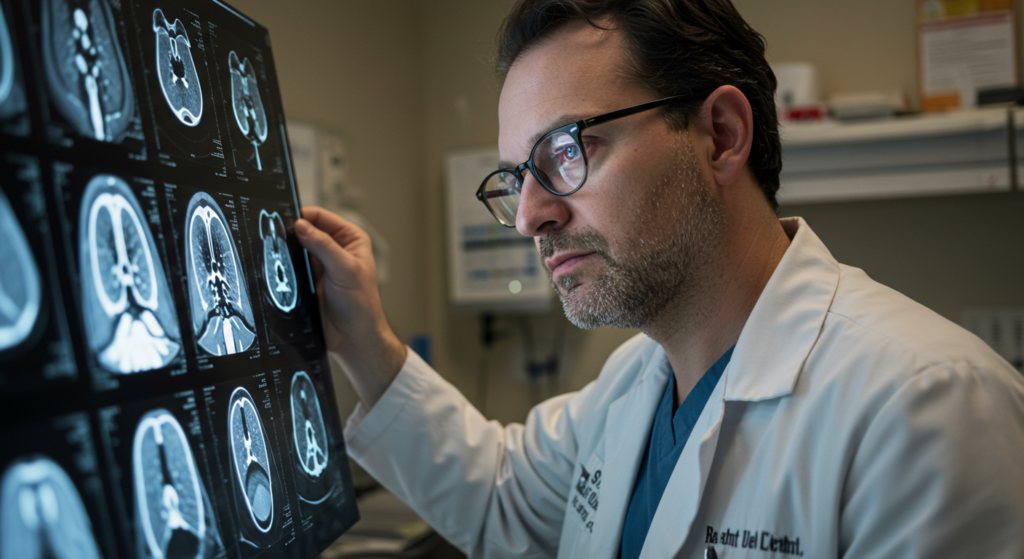
Before we delve deeper into the world of blue light glasses and their impact on digital eye strain, here’s a high-quality blue light blocking solution you might want to check out right away. Click here to explore our amazing blue light blocking glasses! They could be the answer to your eye fatigue problems.
The Science Behind Blue Light and Eye Health
How Blue Light Affects Your Eyes?
Blue light (400–500 nm) is a high-energy wavelength emitted by screens. While it’s essential for regulating sleep cycles, overexposure can disrupt Melatonin production and strain eye muscles. Think of it like staring into a flashlight—except it’s your laptop.
The Role of Blue Light in Modern Screens
LED/LCD screens significantly increase our exposure to blue light. The radiology monitors used in the study, with a resolution of 3280×2048, are no exception. Prolonged exposure to such high – intensity blue light can cause stress to the retina and exacerbate CVS symptoms. Compared to traditional screens, LED/LCD screens can emit up to 30% more blue light. Similar to the radiology monitors in the study, their high – resolution displays flood our eyes with a substantial amount of blue light.
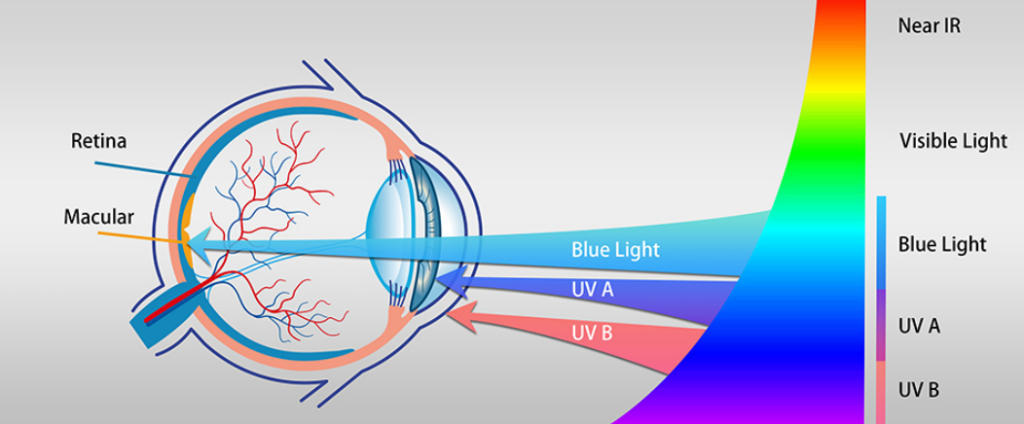
source: MSI
Now that you know how blue light affects your eyes, think about how much time you spend in front of screens every day. Are you taking enough steps to protect your eyes?
Blue Light Filtering Glasses Uncovered: The Mechanics Behind Their Magic
Ever wondered how those seemingly ordinary blue light filtering glasses work their wonders? Let’s dive into the fascinating technology.
Technology Behind Blue Light Lenses
The glasses used in the study are truly remarkable. They filter out half of the 380–500 nm blue light, which is like putting up a strong barrier against a significant portion of the harmful light waves. And get this, they reduce glare by a whopping 99%! It’s as if they’re a super-shield for your eyes, blocking out the harsh glares that make your eyes squint. Plus, they act like a sophisticated light – gatekeeper. They block harmful wavelengths while letting the ‘good’ blue light through, ensuring that the colors you see are as accurate as they should be, just like in the real world.
Blue Light Glasses: Beyond the One Size Fits All Myth
When it comes to blue light protection, not all glasses are created equal. Let’s take a closer look. Some blue light glasses come with yellow tints. While they offer decent protection, they can play tricks on your color perception. It’s like looking at the world through a slightly tinted window; everything has a different hue.
On the other hand, there are glasses with clear coatings. These are a great option if you want to protect your eyes without sacrificing the true colors you love.
In the study, the researchers chose clear lenses for a smart reason. They wanted to make sure the participants couldn’t tell the difference between the real blue-light-filtering glasses and the placebo ones. This way, they could get more accurate results and reduce any bias.
So, when you’re shopping for blue light glasses, keep these differences in mind. Are you more concerned about color accuracy or maximum blue light blockage?
As we’ve learned, blue light glasses work by filtering harmful blue light wavelengths. Our blue light glasses utilize advanced technology to filter out those pesky 400-440 nm wavelengths effectively.
Discover how our glasses protect your eyes with this state of the art filtering system.
The Pilot Study: Key Objectives and Methods
Study Design: Crossover Approach
Ten hard working radiology residents volunteered for this study. For two weeks, they switched back and forth between wearing blue light glasses and placebo lenses. It was like a two week experiment where they experienced two different ‘visual worlds’. In one week, they wore the blue light glasses, and in the other, they wore the placebo lenses that looked identical but had no real blue light filtering function.
This ‘crossover’ method is like having a personalized comparison for each participant. It’s as if each resident was their own control group. By comparing how they felt and performed with different glasses, researchers could get a much more accurate and reliable understanding of the true effects of the blue light glasses. It’s a bit like comparing two different pairs of running shoes on the same runner to see which one helps them run faster and more comfortably.
Tools Used: CVS-Q and SOFI Questionnaires
To measure the impact of blue light glasses on the participants’ eyes and overall well-being, the researchers needed a reliable way to collect data. That’s where the CVS-Q and SOFI questionnaires came in.
Participants rated symptoms using two tools:
CVS-Q: Focused on physical symptoms like dryness and headaches.
SOFI: Measured fatigue categories like “lack of energy” and “sleepiness.”
The CVS-Q is like a detective for physical symptoms. It asks questions like ‘How often do you feel your eyes are dry?’ and ‘Do you experience headaches after using digital devices?’ These questions help researchers understand the physical toll of long – term screen exposure. The SOFI, on the other hand, focuses on different aspects of fatigue. It might ask, ‘How would you rate your lack of energy today?’ and ‘Do you feel sleepy during the day even after a full night’s rest?
Why Radiologists Aren’t the Only Ones at Risk?
When it comes to the risks of Computer Vision Syndrome (CVS), radiologists are often noticed because of their long screen time analyzing scans. But they aren’t the only ones at risk. In today’s digital world, many professions are equally vulnerable. Programmers, graphic designers, data analysts, online educators, and customer service representatives, among others, spend over 8 hours a day in front of screens. This exposes millions of desk-job workers to the risk of CVS. Our study findings show that blue light glasses might help, offering hope in the battle against digital eye strain.
Findings: Did Blue Light Glasses Make a Difference?
The results were promising:
68.8% of CVS symptoms (e.g., eye redness, blurred vision) improved.
81.3% of fatigue symptoms (e.g., drowsiness, physical discomfort) decreased.
Newbies (PGY-2s) felt more fatigued than senior residents. Imagine running a marathon without training
—that’s PGY-2 life. Adjusting to screen-heavy workflows likely explains this gap.

Source: Impact of blue light filtering glasses on computer vision syndrome in radiology residents: a pilot study
Conclusion: Should You Try Blue Light Glasses?
If you’re tired of the eye fatigue from long screen hours, blue light glasses are worth a try. They’re a low-risk option with great potential benefits. While not a panacea, they can be a helpful part of your eye care routine. Combine them with good habits like the 20-20-20 rule for the best results. Check out Goiteia blue light glasses product to start protecting your eyes today!
FAQs
1.Do blue light glasses help with sleep?
Yes! Blue light suppresses Melatonin, a sleep-regulating hormone. It blocks this light, helping re-establish normal Melatonin rhythm for better sleep. If you have trouble sleeping after using digital devices, these glasses can be a great addition to your bedtime routine.
2.Can kids use blue light glasses?
Yes, especially if they have lots of screen time. Prolonged blue light exposure can harm kids’ developing eyes. Choose durable, kid-friendly frames with fun designs to protect their eyes.
3.Do they work for contact lens wearers?
Yes. Blue light glasses filter blue light regardless of contact lens use, providing an extra layer of protection.
4.Are expensive blue light glasses better?
Not necessarily. Focus on lens specs like blue light filtering percentage and anti glare coatings, not the price or brand. Moderately priced glasses with good quality lenses can be equally effective.
- The experimental content of the article comes from: Journal of Medical Imaging.


